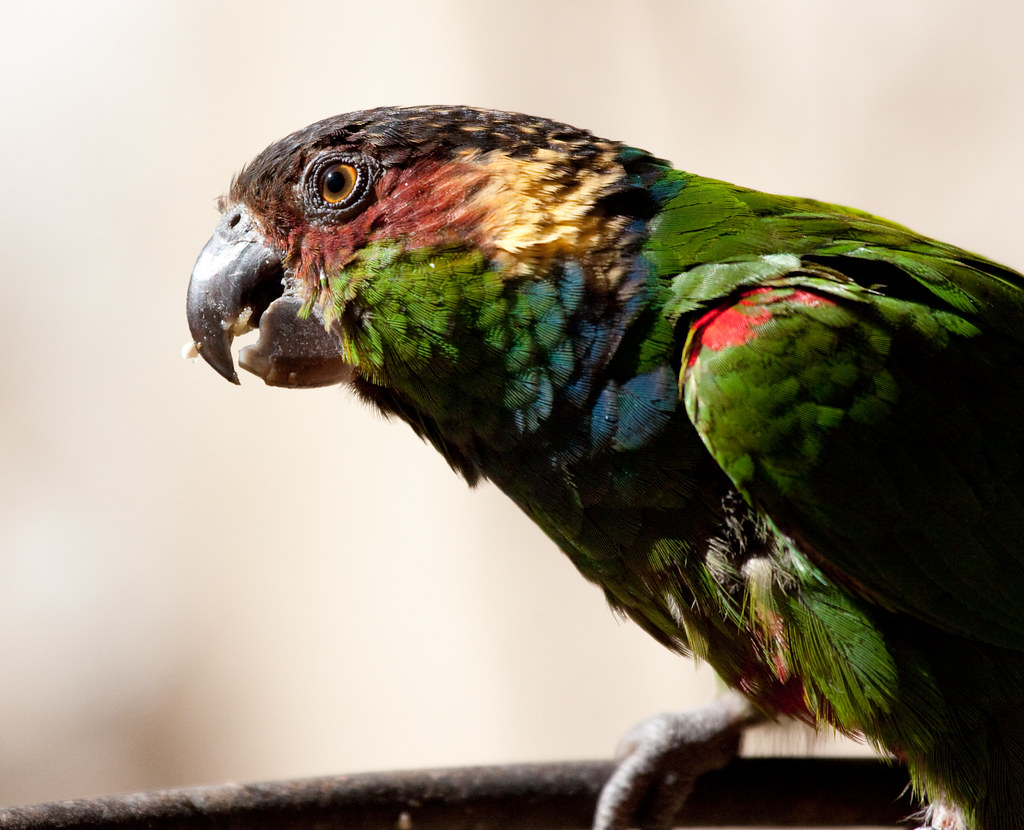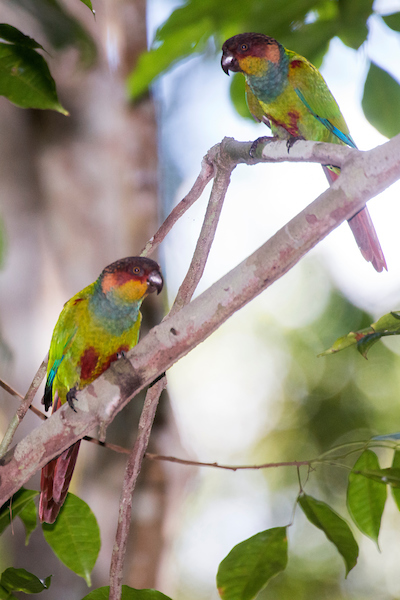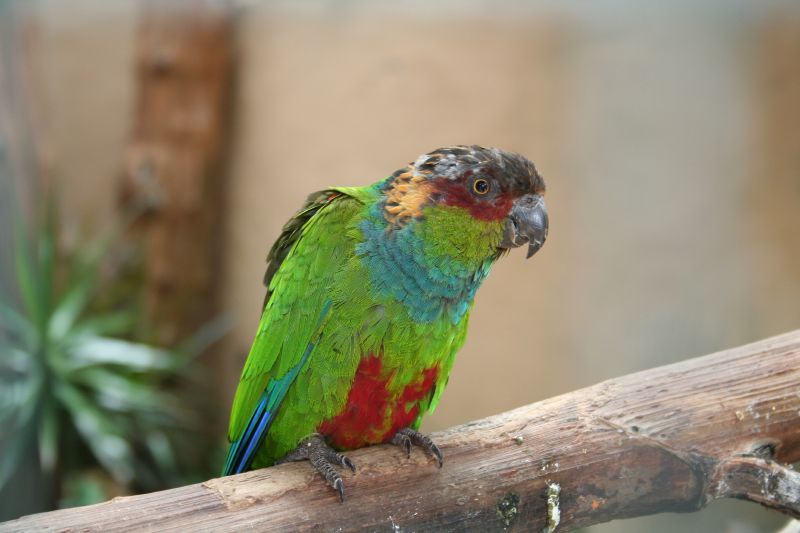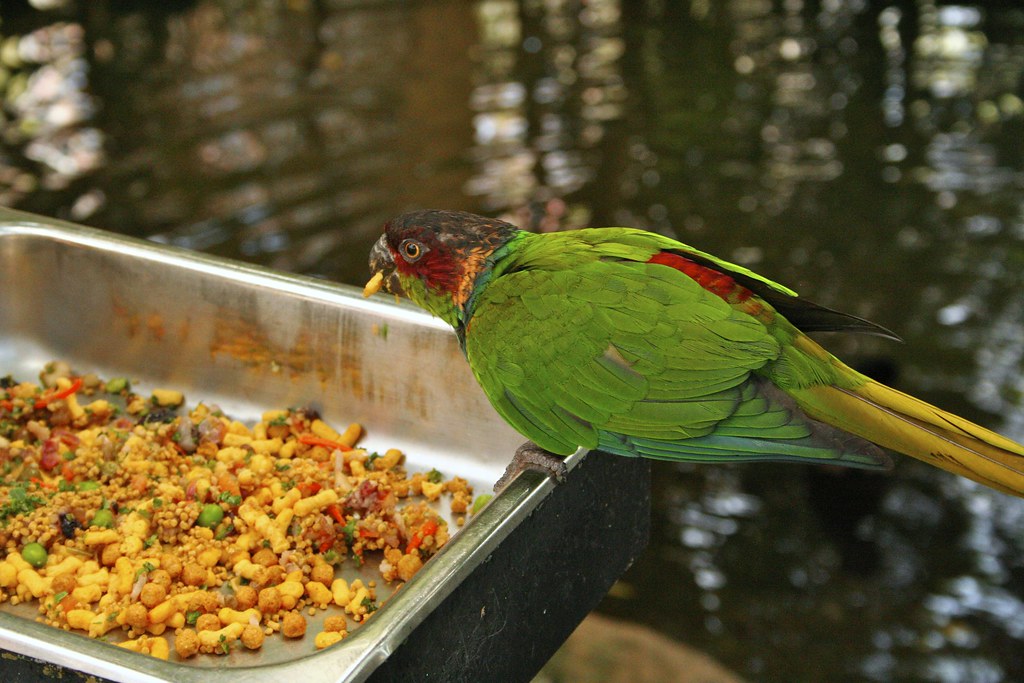
Learn all about the blue-throated conure, including its physical characteristics, behavior, habitat, and care requirements. Discover why this parrot species has become a popular choice for bird enthusiasts.Read More
All About Blue Throated Conure
The Blue-throated Conure, scientifically known as Pyrrhura cruentata, also known as the Ochre-marked Parakeet, is a vibrant and charismatic parrot native to the eastern regions of Brazil. Here’s a closer look at these beautiful birds:
Appearance of Blue Throated Conure

- Predominantly Green: As their name suggests, Blue-throated Conures are primarily green. This green plumage covers most of their body and wings.
- Striking Accents: Adding pops of color are:
- Red patches on their belly, rump, and shoulder.
- A conspicuous red patch before, below, and behind the eye, like a mask.
- Blue Throated Beauty: Their most distinctive feature is the brilliant blue bib that adorns their chest and extends thinly around the back of their neck, forming a faint collar.
- Tail and Beak: Their tail feathers are olive-green on top and brownish-red below. They have a curved, bone-colored beak.
- Sexual Dimorphism: It can be challenging to distinguish males from females based on plumage alone. However, adult males typically have very dark brown (almost black) irises, while females have mid-brown or reddish irises.
Behaviour of Blue Throated Conure
- Social Creatures: They are social birds, often seen in small flocks alongside other conure species. They enjoy the company of their own kind and forage for food together.
- Active and Playful: These energetic birds love to fly, climb, and explore their environment. They are known for their playful personalities and may engage in acrobatics within the trees.
- Communication Skills: They communicate through a variety of vocalizations, including high-pitched calls and chattering sounds.

Diet of Blue Throated Conure

- Primarily Herbivores: Their diet consists mainly of fruits, seeds, nuts, flowers, and buds. Their strong beaks allow them to crack open nuts and seeds to access the nutritious kernels inside.
- Potential for Crop Raiding: In some instances, they may raid crops in search of food, particularly when their natural food sources are scarce.
Habitat of Blue Throated Conure
Atlantic Rainforest Dwellers: Blue-throated Conures are found in the lush Atlantic rainforests of eastern Brazil, inhabiting the lowlands and sometimes venturing into the tree canopy. Sadly, their habitat is increasingly fragmented due to deforestation.
Blue Throated Conure as a Pet
While these birds are captivating, they are not commonly bred in captivity and are not readily available as pets. Their rarity and vulnerable status make it important to prioritize conservation efforts.
Want to learn more about Crimson Bellied Conures? Check out our blog post!”

Subscribe to our newsletter!


